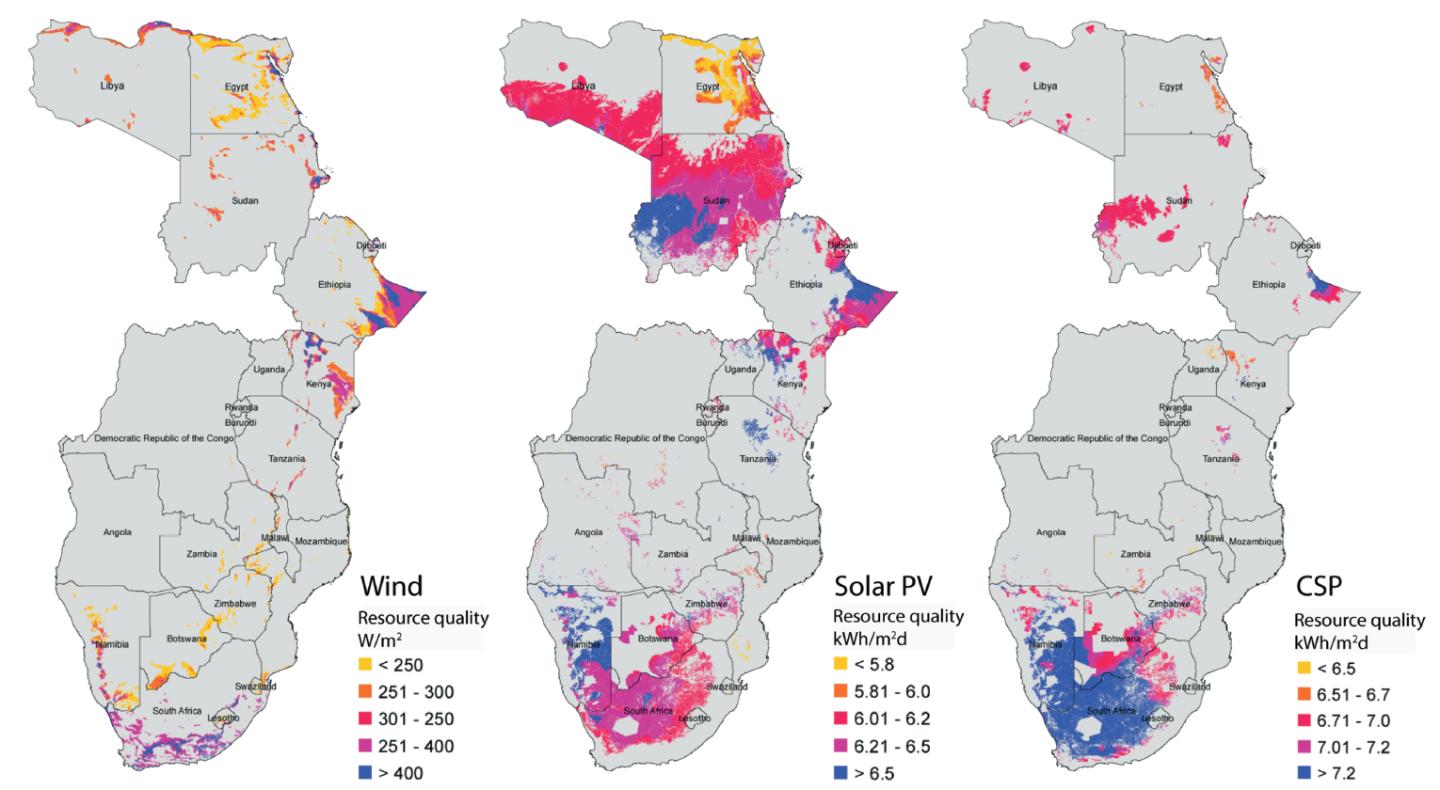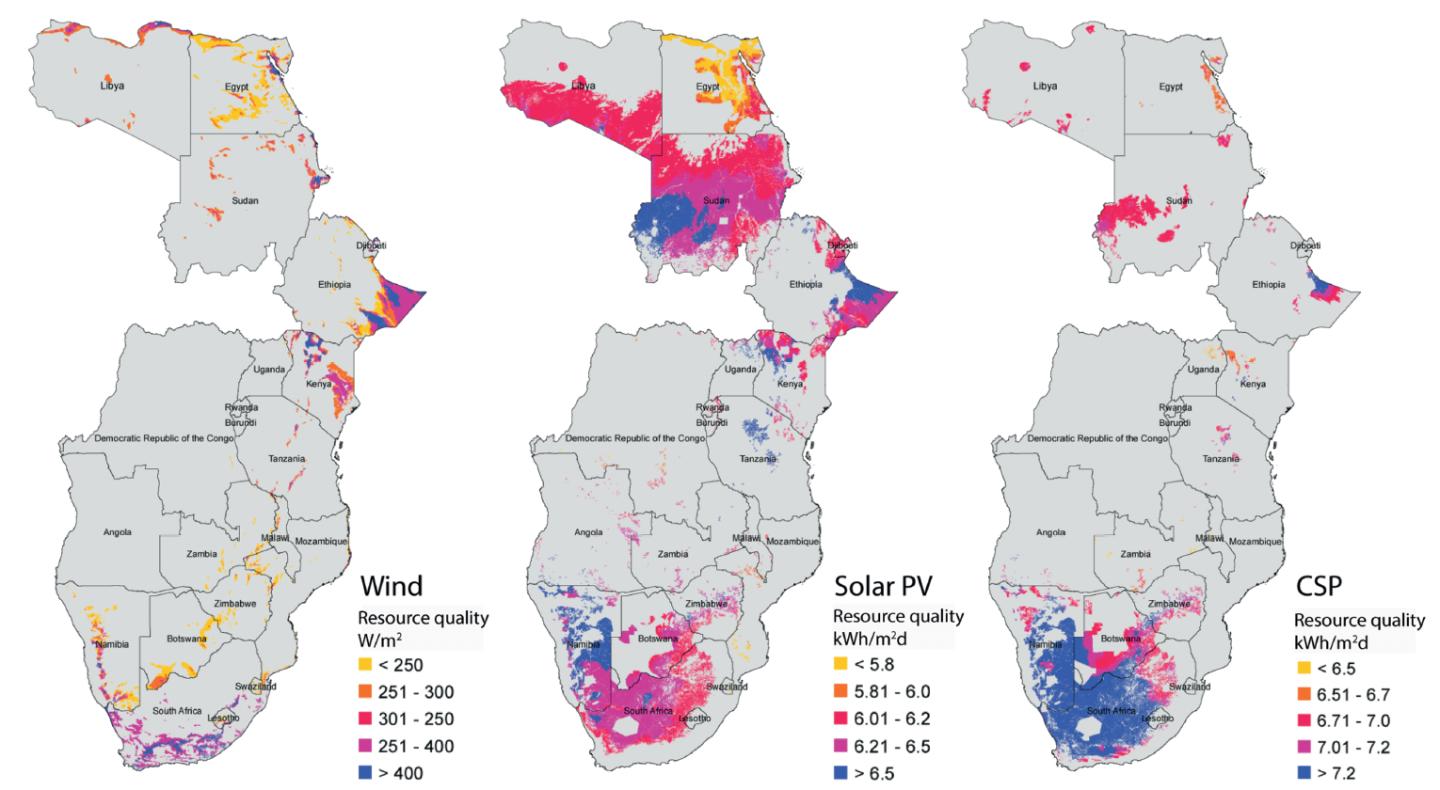
Credit: UC Berkeley
As Africa gears up for a tripling of electricity demand by 2030, a new Berkeley study maps out a viable strategy for developing wind and solar power while simultaneously reducing the continent's reliance on fossil fuels and lowering power plant construction costs.
Using resource mapping tools, a University of California, Berkeley, and Lawrence Berkeley National Laboratory team assessed the potential for large solar and wind farms in 21 countries in the southern and eastern African power pools, which includes more than half of Africa's population, stretching from Libya and Egypt in the north and along the eastern coast to South Africa.
They concluded that with the right strategy for placing solar and wind farms, and with international sharing of power, most African nations could lower the number of conventional power plants – fossil fuel and hydroelectric – they need to build, thereby reducing their infrastructure costs by perhaps billions of dollars.
"The big surprising find is that the wind and solar resources in Africa are absolutely gigantic, and something you could tap into for relatively low cost," said senior author Duncan Callaway, a UC Berkeley associate professor of energy and resources and a faculty scientist at Bekeley Lab. "But we need to be thinking now about strategies for fostering international collaboration to tap into the resource in a way that is going to maximize its potential while minimizing its impact."
The main issue, Callaway says, is that energy-generating resources are not spread equally thoughout Africa. Hydroelectric power is the main power source for one-third of African nations, but it is not available in all countries, and climate change makes it an uncertain resource because of more frequent droughts. The best areas for wind and solar are not equitably distributed either, and many argue that wind and solar are too erratic and undependable.
Based on the team's analysis, however, choosing wind sites to match the timing of wind generation with electricity demand is less costly overall than choosing sites with the greatest wind energy production. Assuming adequate transmission lines, strategies that take into account the timing of wind generation result in a more even distribution of wind capacity across countries than those that maximize energy production.
Importantly, the researchers say, both energy trade and siting to match generation with demand reduces the system costs of developing wind sites that are low impact, that is, closer to existing transmission lines, closer to areas where electricity would be consumed and in areas with preexisting human activity as opposed to pristine areas.
"If you take the strategy of siting all of these systems such that their total production correlates well with electricity demand, then you save hundreds of millions to billions of dollars per year versus the cost of electricity infrastructure dominated by coal-fired plants or hydro," Callaway said. "You also get a more equitable distribution of generation sources across these countries."
"Together, international energy trade and strategic siting can enable African countries to pursue 'no-regrets' wind and solar potential that can compete with conventional generation technologies like coal and hydropower," emphasized UC Berkeley graduate student Grace Wu, who conducted the study with fellow graduate student Ranjit Deshmukh. Wu and Deshmukh are the lead authors of the study.
The study will appear online this week in the journal Proceedings of the National Academy of Sciences.
Charting Africa's energy future
The team set out to tackle a key question for electricity planners in Africa and the international development community, which helps fund such projects: How should these countries allocate their precious and limited investment dollars to most effectively address electricity and climate challenges in the coming decades? The fear, Callaway said, is that reliance on traditional hydro and fossil fuel – mostly coal – power plants will push out more environmentally friendly renewable sources in the future.
Wu and Deshmukh gathered previously unavailable information on the annual solar and wind resources in 21 countries in eastern and southern Africa, and hourly estimates of wind speeds for nine countries south of the Sahara Desert.
They developed an energy resource mapping framework, which they call Multi-criteria Analysis for Planning Renewable Energy, or MapRE, to identify and characterize potential wind and solar projects. They then modeled various scenarios for siting wind power and examined additional system costs from hydro and fossil fuels.
The team concluded that even after excluding solar and wind farms from areas that are too remote or too close to sensitive environmental or cultural sites — what they term "no-regret" sites – there is more than enough land in this part of Africa to produce renewable power to meet the rising demand, if fossil fuel and/or hydroelectric power are in the mix to even out the load. Nevertheless, choosing only the most productive sites for development – the windiest and sunniest – would leave some countries with little low-cost local renewable energy generation.
If, however, countries can agree to share power and build the transmission lines to make that happen, all countries could develop sites that are low-cost and accessible, and have low environmental impact, while reducing the number of new hydro or fossil fuel plants that need to be built.
Callaway says that a few countries already share power, such as South Africa with Mozambique and Zimbabwe, but that more countries will need to broker the agreements and build the transmission lines to allow this. International transmission lines are being planned, but primarily to share hydropower resources located in a handful of countries. These transmission plans need to incorporate sharing of wind and solar in order to help them be competitive generation technologies in Africa, he said.
###
Other co-authors are Daniel Kammen, a UC Berkeley professor of energy and resources, Jessica Reilly-Moman and Amol Phadke of the International Energy Studies Group at Berkeley Lab, Kudakwashe Ndhlukula of the Southern Africa Development Community Center for Renewable Energy and Energy Efficiency at the Namibia University of Science and Technology in Windhoek, and Tijana Radojicic of the International Renewable Energy Agency in Masdar City, Abu Dhabi, United Arab Emirates.
The International Renewable Energy Agency supported much of the initial research. The National Science Foundation and the Link Foundation supported the expanded analysis on wind siting scenarios.
Media Contact
Robert Sanders
[email protected]
510-643-6998
@UCBerkeleyNews
############
Story Source: Materials provided by Scienmag





